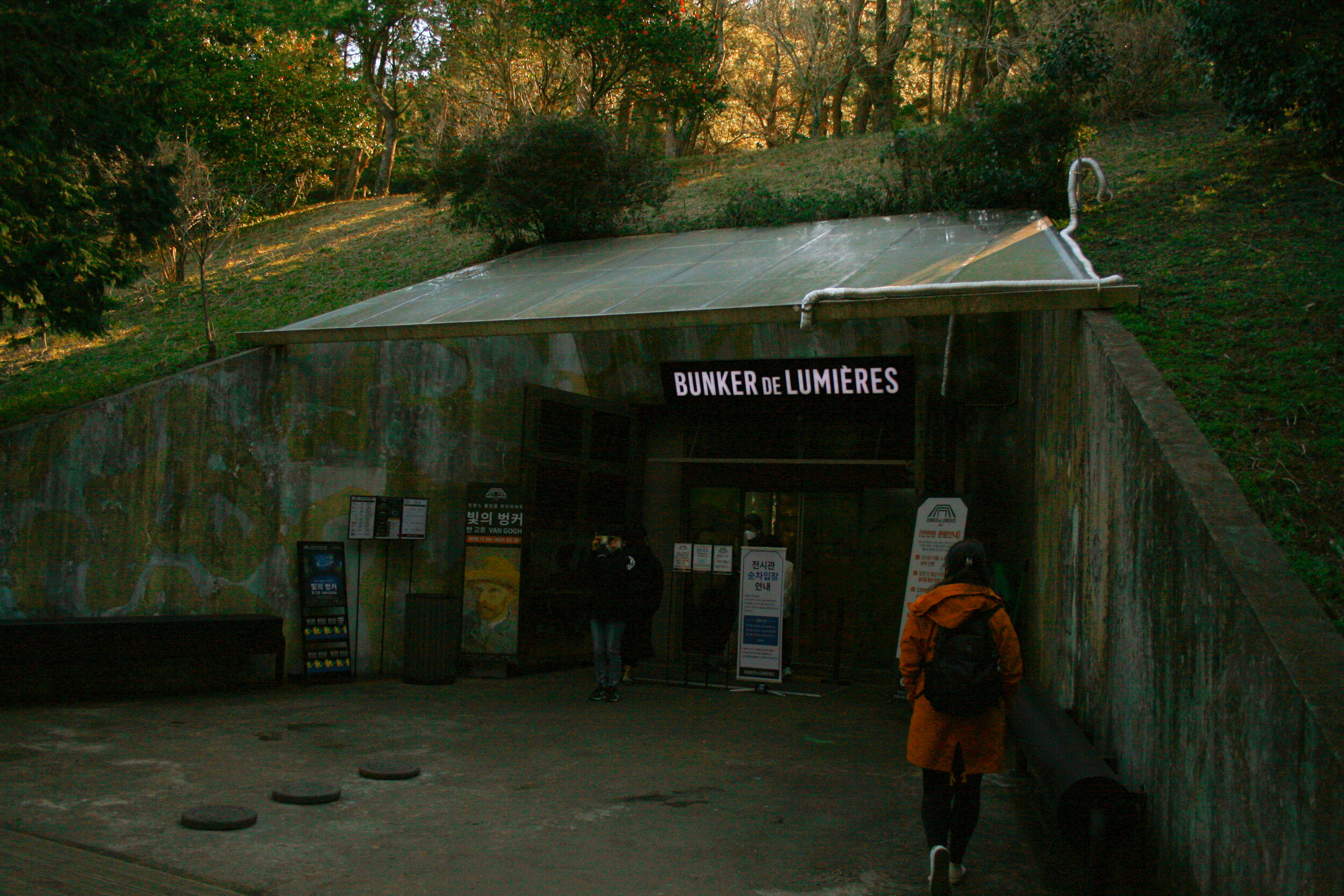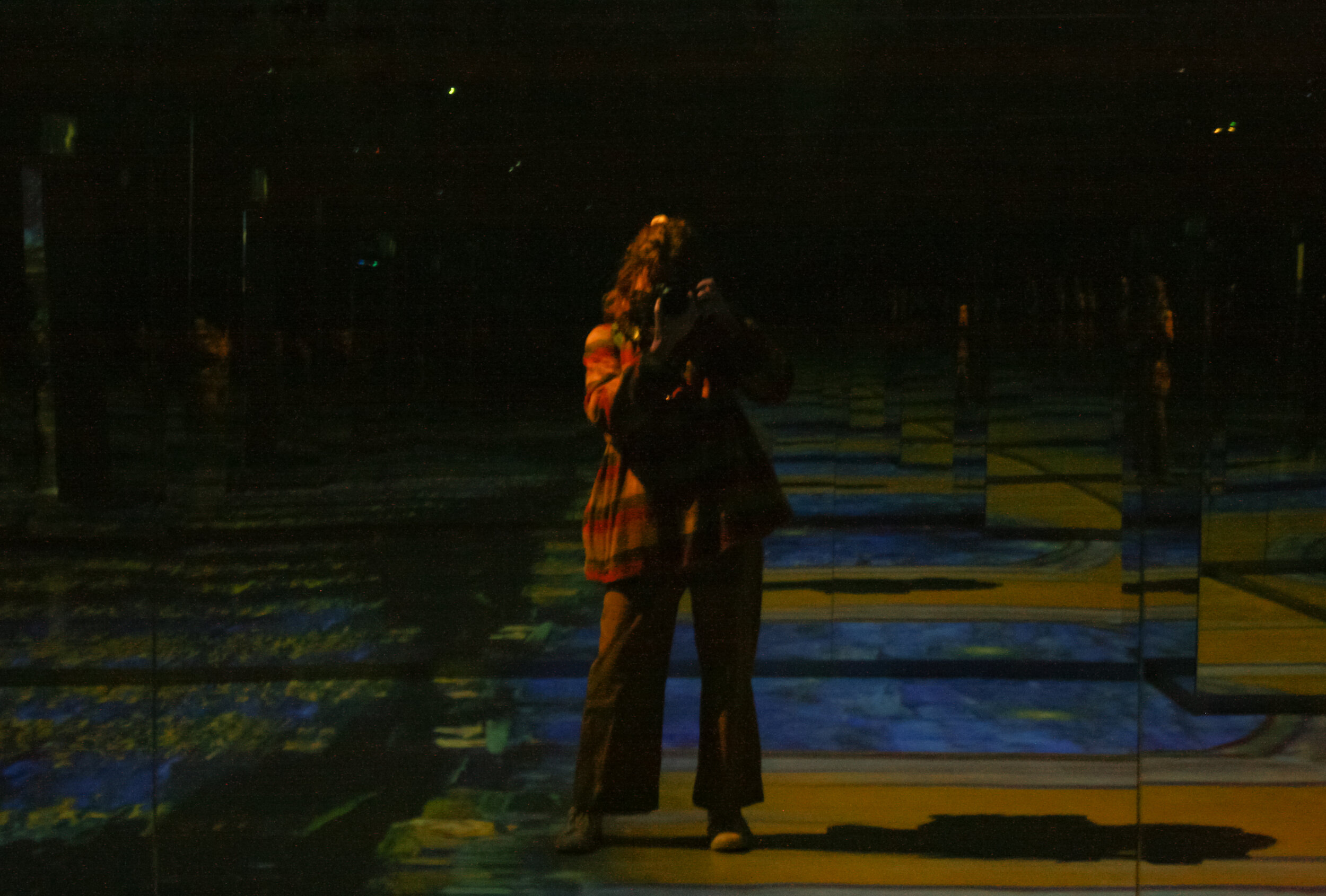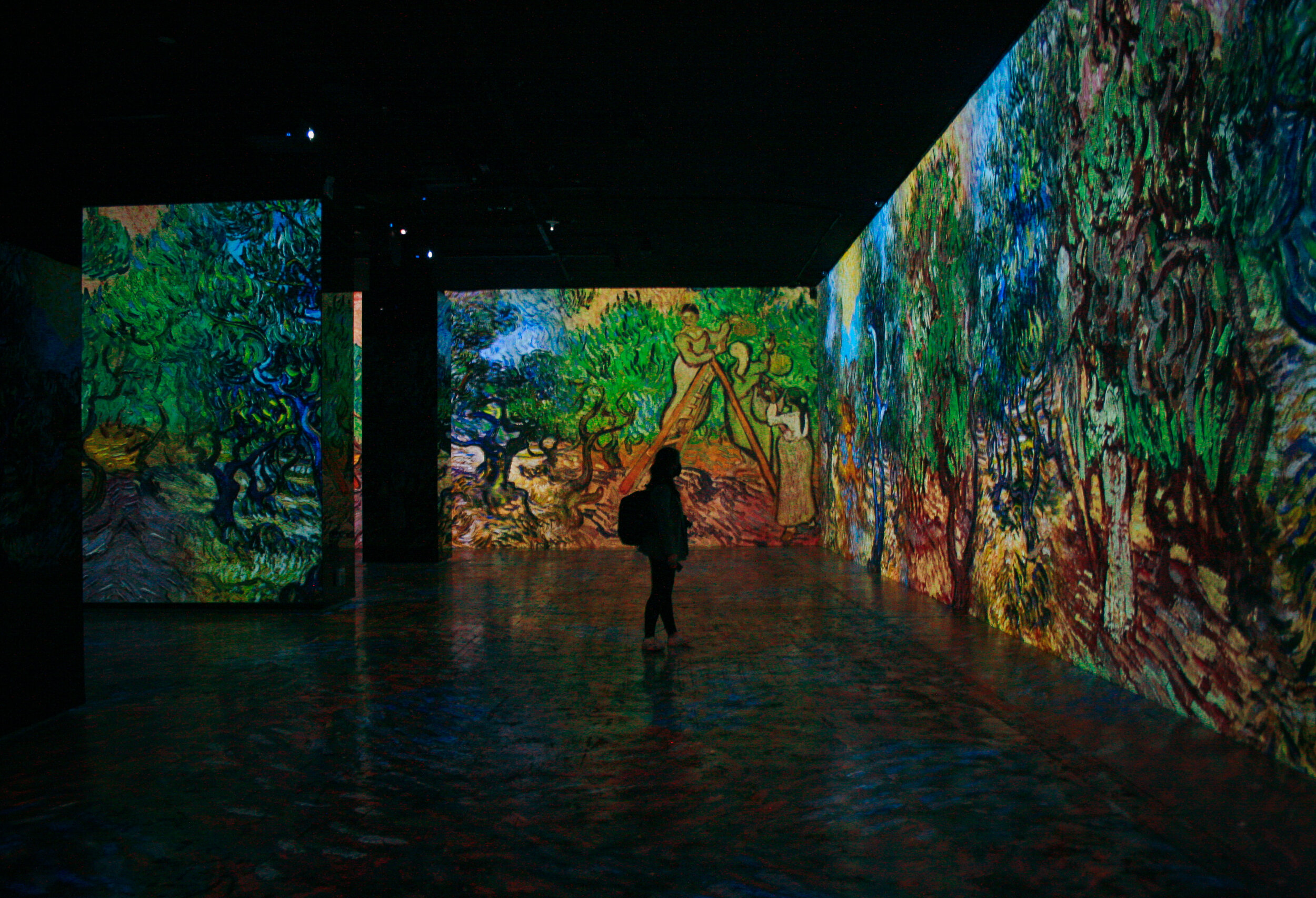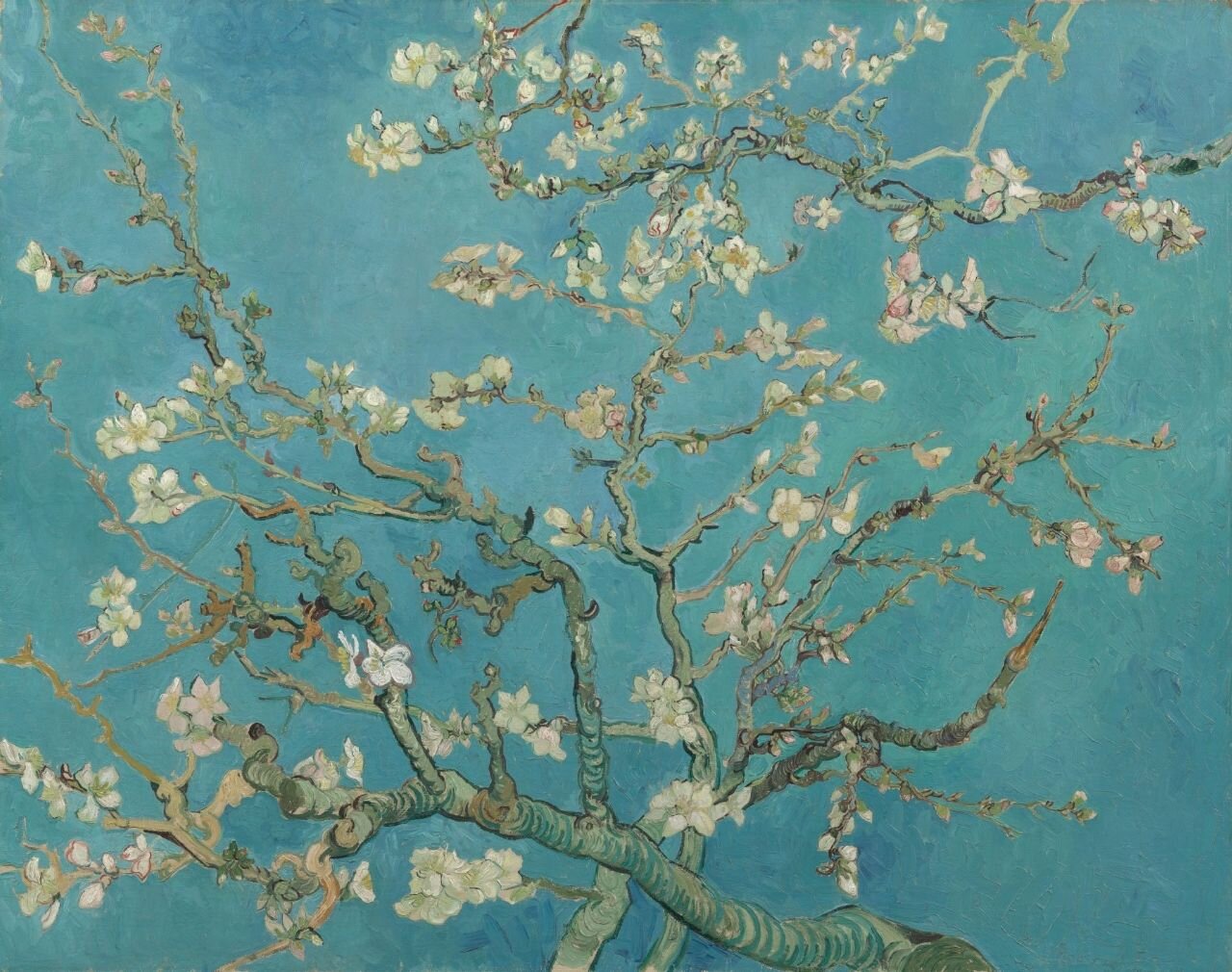Making Art Into an Experience: The Bunker de Lumières in Jeju
Part of my Jeju series.
For Spring Break, I traveled to Jeju Island off the coast of Korea.
Short disclaimer: traveling around Korea right now is acceptable and safe, and I got complete permission from my school (in fact, they were confused why I even asked…).
So, double masked and soaked in hand sanitizer, we started our trip with the sunrise on the coast. After, we headed to my favorite part of the whole trip: The Bunker de Lumières빛의 벙커.
This is a digital art installation featuring classic paintings set to expansive, dramatic music, built into an old bunker. There’s a version in Paris called L’Atelier des Lumières.
Their exhibit while we were there was Van Gogh and Gauguin. They had just wrapped up their Michaelangelo and Klimt exhibits and, as of this writing, are gearing up for Monet, Renoir, and Chagall.
Also, quick side note: right next door to this is a coffee museum (제주커피박물관 Baum). Entry is 1,000 won or free if you buy a coffee from the café upstairs. It was small and not English friendly, but I’d say worth it if you’re as hopelessly addicted to caffeine as I am and aspire to make that addiction into some sort of academic pursuit.
Anyway, back to business.
The museum has a small lobby with Korean and English explanations of Van Gogh and Gaugin’s lives. After, you head into the actual exhibit. This was a big space—there’s different rooms, some with windows or mirrors, and a loooong main hall.
The whole idea is making art dynamic and expressive in a way you don’t normally get in museums. It starts with a painter’s palette with someone blending oil paints. Then the music swells, and it takes you into Van Gogh’s work, swirling and swimming.
Some parts are creepy. Some are forlorn. Some are beautiful and romantic. I don’t believe there’s any chronology to the exhibition—it rather combines paintings in tone and color.
I really adored seeing art like this. It reminded me of teamLab Borderless in Tokyo. Maybe not as interactive, but just as immersive.
I like to make art and although mine is not anything like his, I’m a pretty big fan of Van Gogh and I’ve learned a lot from his impressionist and post-impressionist tendencies. I couldn’t get enough of this. I was lost in the sauce.
At a certain point, all you could do was sit and let the colors and music wash over you. At the risk of overstating it, this was probably the closest thing I’ve had to a religious experience in a really long time. I kept getting chills.
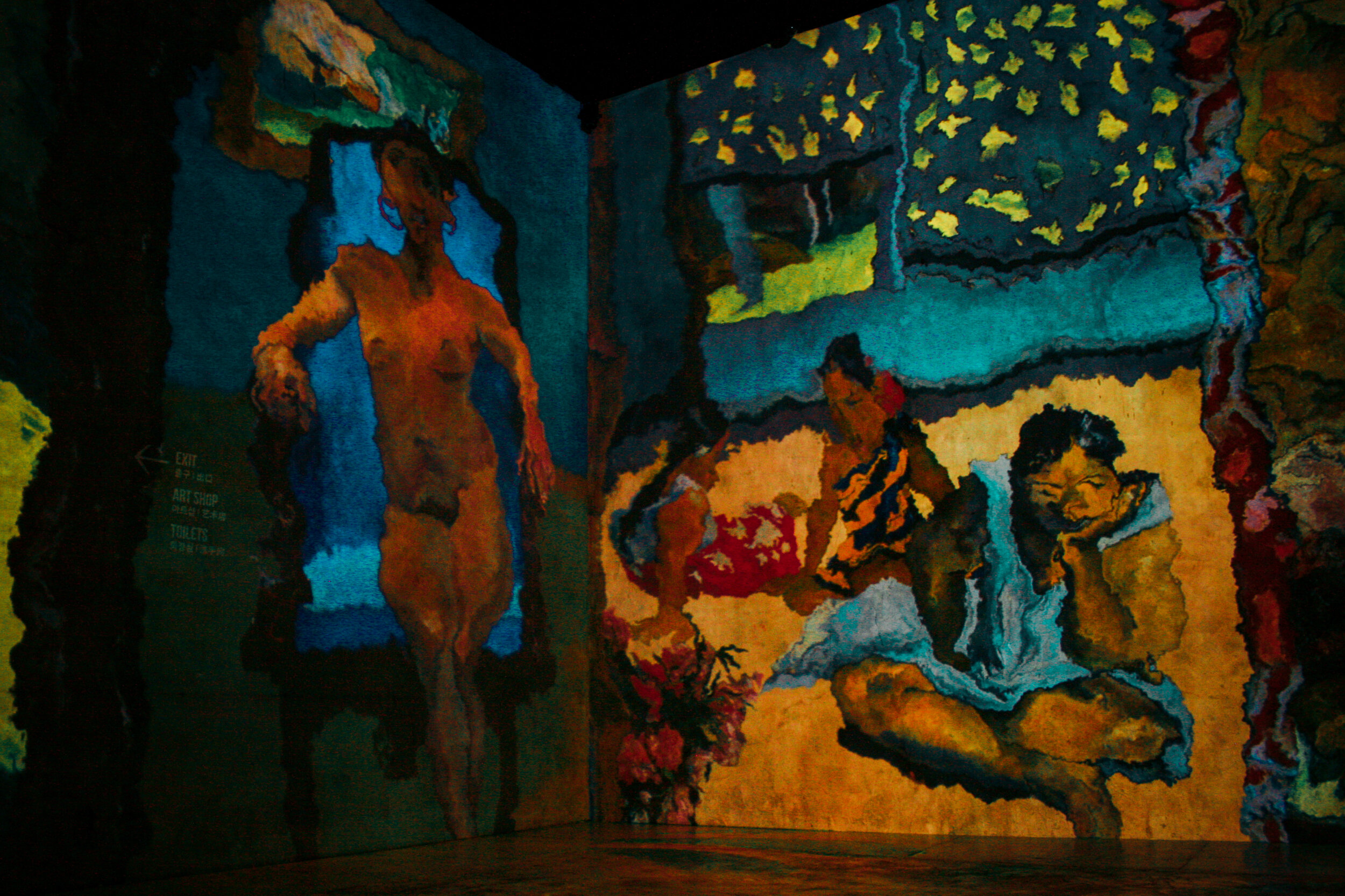
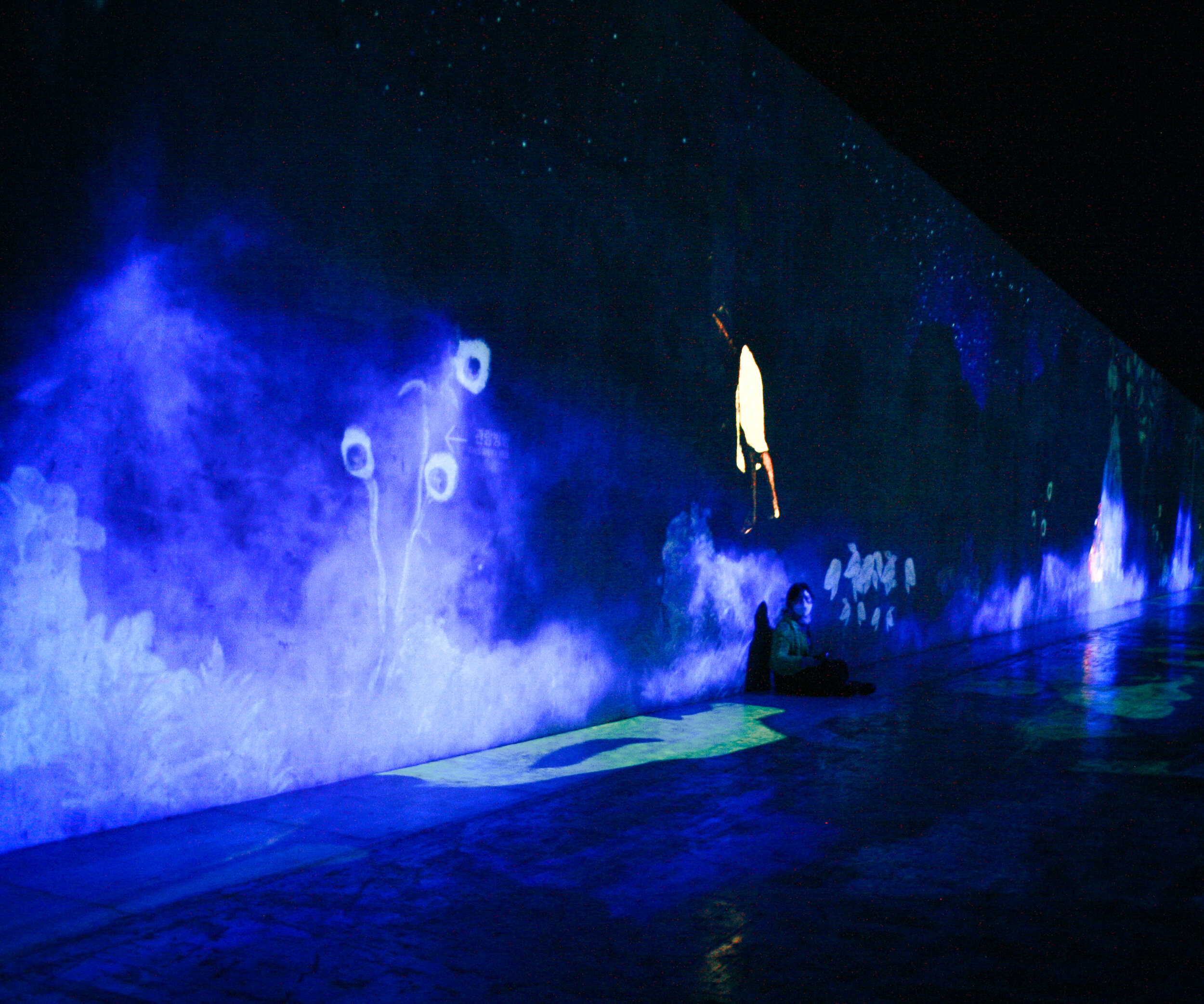

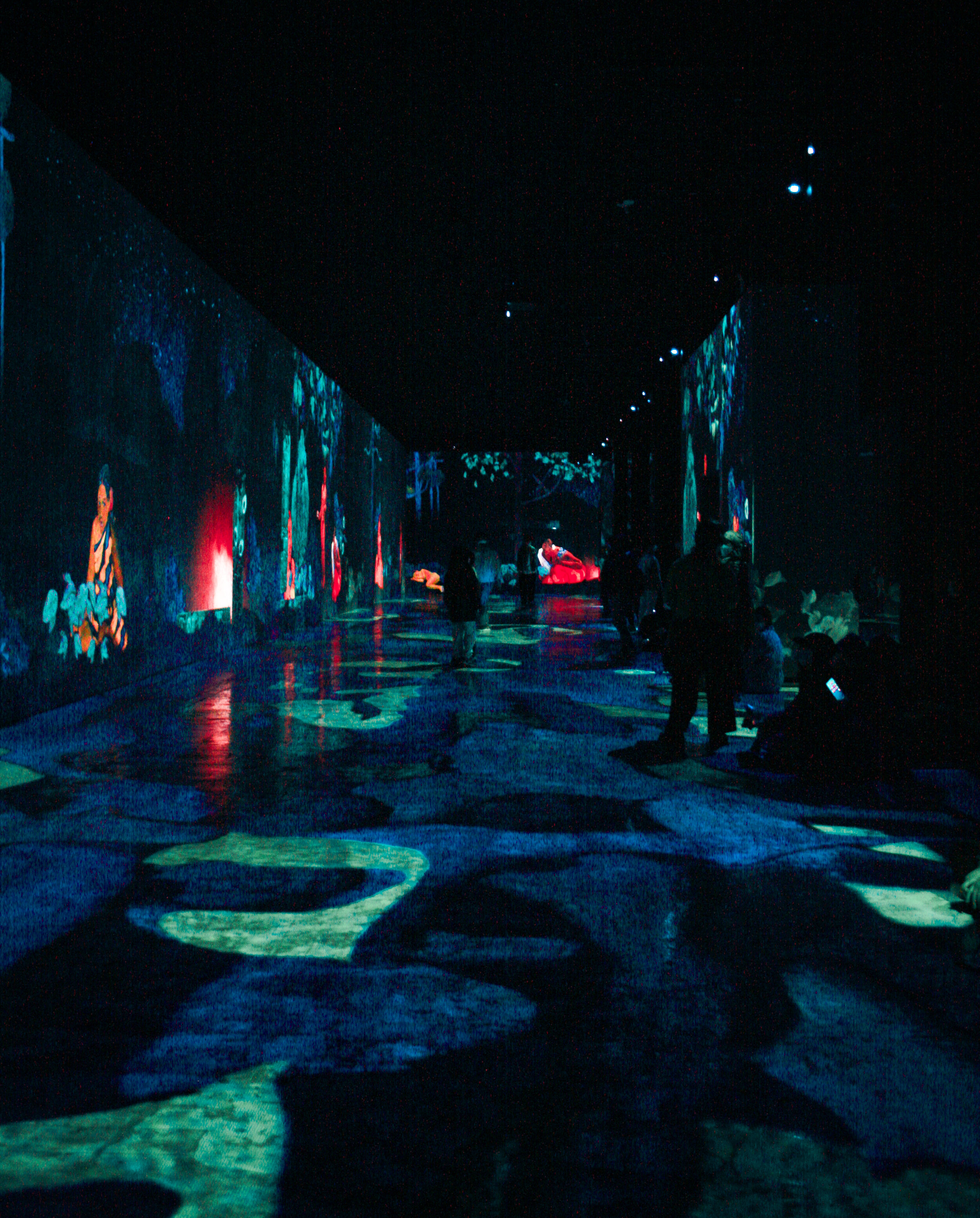
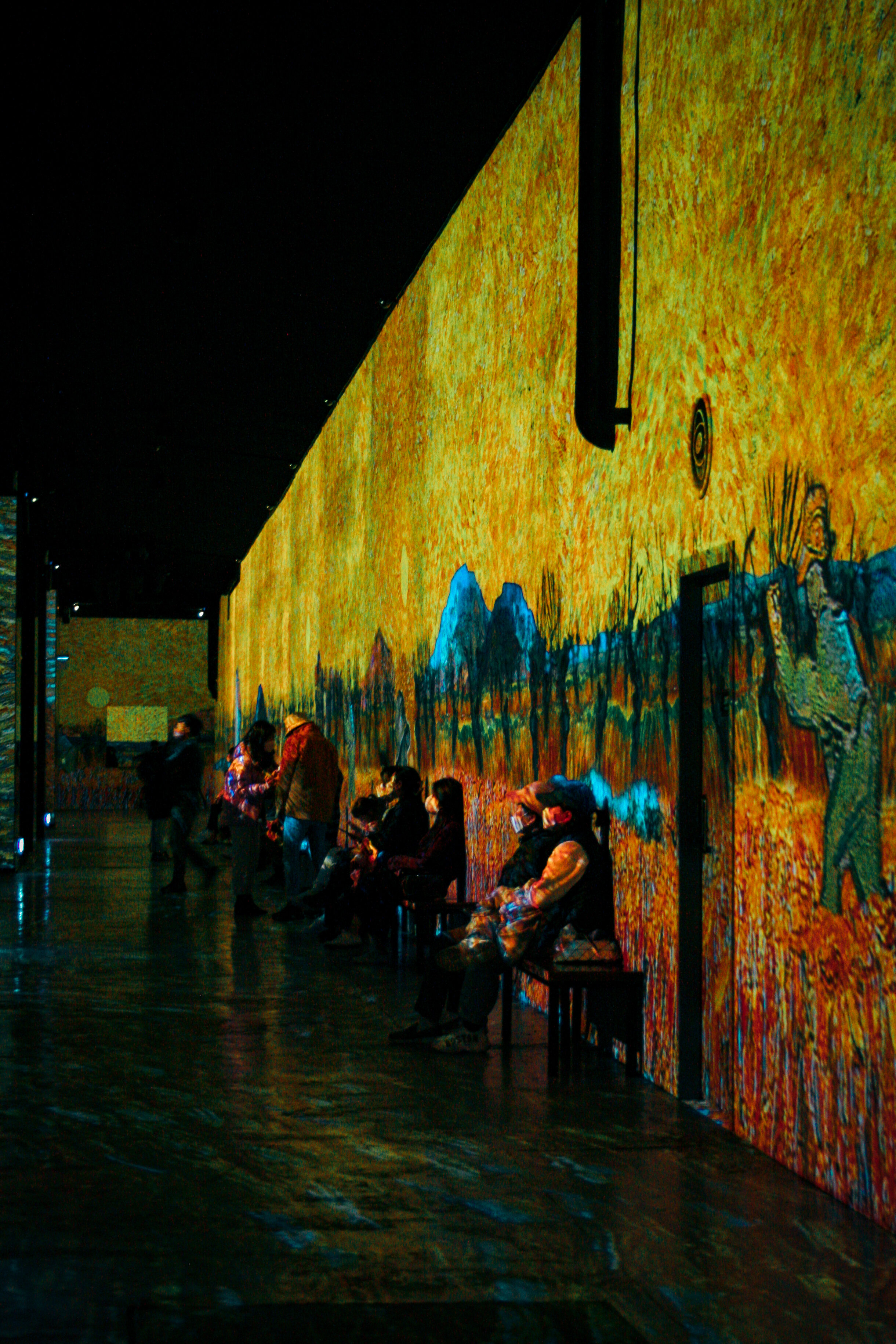
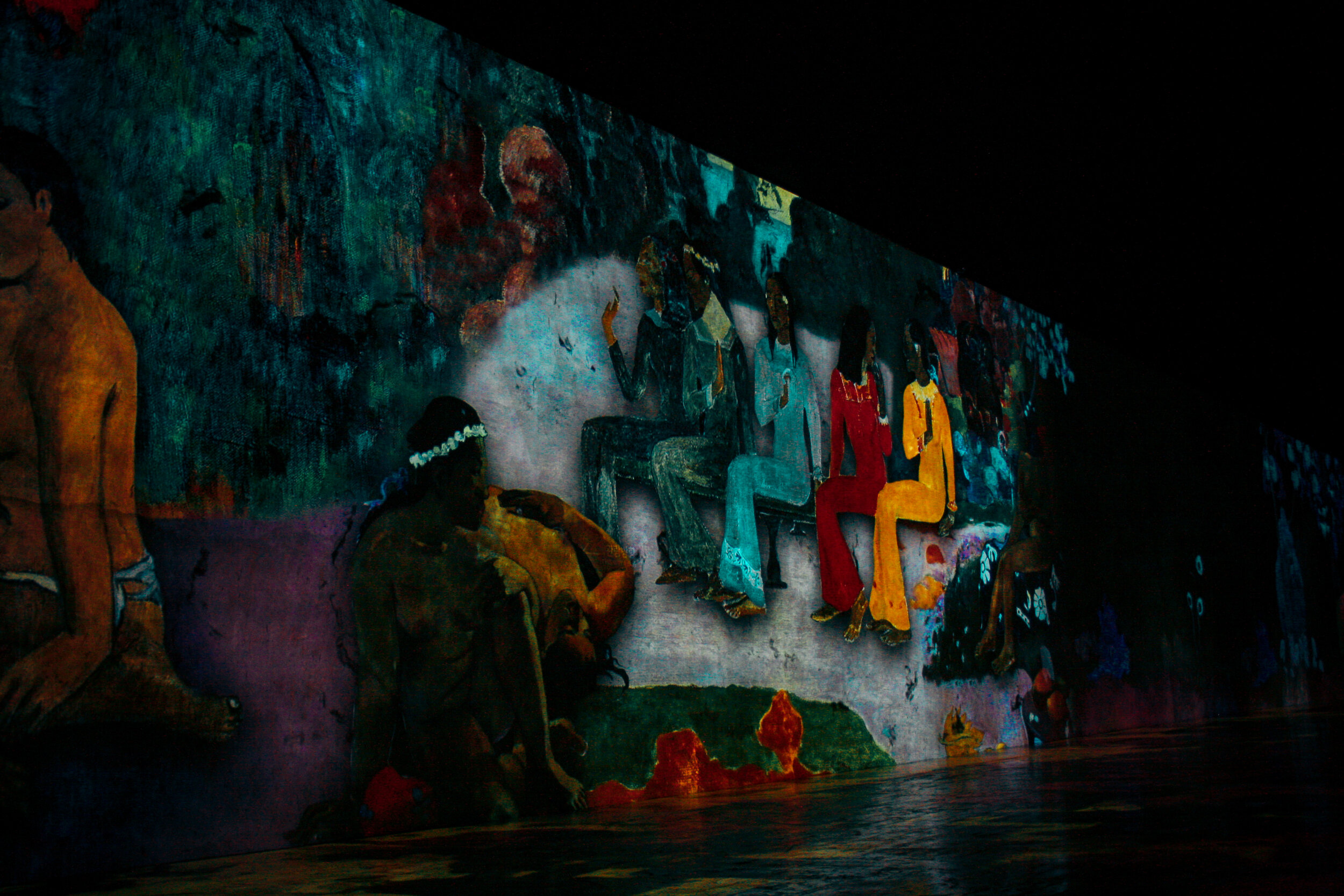


After about thirty minutes, the exhibit turned off the lights, gave a moment of pause, and began with Gauguin’s paintings. Respective to their popularity, I guess, Gauguin’s section was much shorter.
The whole time, I couldn’t stop thinking about that one episode of Doctor Who where they go back in time and meet Van Gogh. Maybe you’ve seen it. The Doctor takes Vincent to the future and shows him his paintings hanging in the Louvre. The idea is that Van Gogh, at last, sees the love his art would get after his death. It’s a pretty beautiful performance, if you ask me.
Van Gogh gets pretty mercilessly pinholed with the “tortured artist” trope. It’s well known he suffered from severe depression, poverty, and mental illness. But we romanticize that—we as a society think his work is born from that suffering, not in spite of it. We see madness and creativity as two sides to the same coin, as tragic as it is natural and evitable.
I reject that. What if Van Gogh had had the resources and help he needed? What if, for once, we saw Vincent as the person, not the artist?
This is all a tangent beyond me. This article explains the “tortured artist” trope much more eloquently, if you’re interested.
What I’m trying to say is that this museum reminded me of that episode and in turn made me ask myself, what if Van Gogh could stand where I am now, and see his work on screens like this? How would he feel?
It wouldn’t be enough to atone for all the ways the world failed him—in many more ways than not recognizing his talent in his lifetime. But, in my opinion, it’s still a beautiful thought. Wouldn’t we all like to see that our art meant something to someone else?
After a while in the gift shop, we left and walked down the road to our bus stop, and we passed by this cherry blossom tree.
I had just bought a print of Van Gogh’s Almond Blossoms, one of my favorites of his, and saw this. Call it serendipity. I guess this photo is my own take on it.
Thanks for reading.


